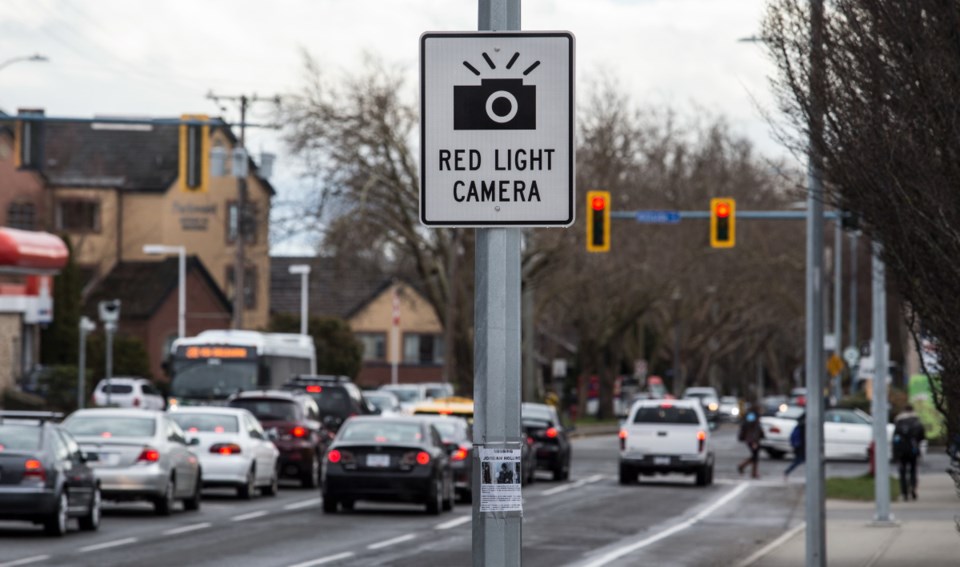Red-light cameras are now operating around the clock at 140 intersections in B.C., including six on Vancouver Island.
The cameras, which snap pictures of cars running red lights, previously operated for just six hours a day. They have been upgraded so that they can run 24 hours a day.
Provincial officials moved last year to increase the operating time in an effort to reduce crashes and keep a lid on Insurance Corp. of B.C.’s skyrocketing costs.
Cameras at a number of locations switched to longer hours last November and all were working around the clock by the end of July.
“Last year, there were more than 350,000 crashes in this province and 60 per cent of them occurred at intersections,” Solicitor General Mike Farnworth said in an interview. “We have to bring that down.
“The cameras have been operating for six hours a day and, clearly, people think most of the time they’re not on. If they’re on 24 hours a day, people will most likely think twice before running the red light.”
The provincial government has hired more staff to review incidents and issue tickets. The vehicle’s owner is responsible for the $167 fine even if someone else was driving.
“I think the public support is absolutely there,” Farnworth said. “Every survey I’ve seen shows that people running red lights at intersections is one of the top frustrations of motorists.”
Greater Victoria has two red-light cameras, at Tillicum Road and the Trans-Canada Highway, and Shelbourne Street at Hillside Avenue. There are two cameras in Nanaimo (Island Highway at Aulds Road and Norwell Drive), and one each in Duncan (Trans-Canada Hwy at Trunk Road) and Courtenay (17th Street at Cliffe Avenue).
The Capital Regional District’s traffic safety commission welcomed the decision to operate the cameras around the clock.
“Most of us on the commission were surprised to learn they were only operating six hours a day,” said Saanich Coun. Colin Plant, who chairs the commission. “It seems logical that they would be in operation 24 hours a day, because infractions happen 24 hours a day.
“I think anything that can help make roads less dangerous because people are driving with caution, or perhaps even fear of getting a ticket, is a good thing. If you don’t run the red light, you won’t get a ticket.”
Plant and Chris Foord, the commission’s vice-chairman, both said the only concern they have is that they’d like to see more than two red-light cameras in the region. “To me, it seems appropriate that we have at least six of them in Victoria,” Foord said.
Plant said he’s looking forward to the cameras soon being used to catch speeders as well as red-light violators. “Technology needs to be embraced and where we have problems we need to implement solutions.”
Farnworth announced in March that the government will begin upgrading red-light cameras to identify motorists racing through intersections on red, yellow or green lights.
He said officials are analyzing crash data to determine which intersections will get the new technology. The locations will be announced this fall and signs will be posted at the intersections to alert motorists.
“It’s not a cheap operation to upgrade,” Farnworth said, adding that only the highest risk intersections will be equipped to catch speeders.



